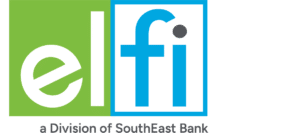Under the Coronavirus Aid, Relief, and Economic Security (CARES) Act, some student loan borrowers got much-needed help with their debt.
These relief benefits were recently set to expire on January 31, 2021. But a major update occurred on newly inaugurated President Joe Biden’s first day in office.
On the first day of his presidency, Joe Biden issued a request to the U.S. Department of Education to further extend the pause on federal student loan payments and interest. Those student loan benefits are now officially set to continue until September 30, 2021.
This means that payments and interest charges will now resume after October 1, 2021.
Here’s how to take advantage of the CARES Act extension of student loan benefits, and what to do if you’re not eligible for the protections it offers.
The CARES Act and federal student loans
On March 20, the CARES Act was first passed to help student loan borrowers during the coronavirus pandemic. It had multiple features to assist borrowers who lost their jobs or had experienced losses of income because of COVID-19:
- It suspended loan payments: From March 20 until September 30, all loan payments were automatically suspended. Borrowers could skip their minimum monthly payments without going into default.
- It stopped collections on defaulted student loans: For the duration of the CARES Act, all collections activity on defaulted loans were halted.
- It set interest rates to 0%: Interest rates on all eligible federal loans were reduced to 0%, preventing loan balances from growing while payments were suspended.
However, not all student loans qualified for the CARES Act benefits. Only federal Direct Loans were eligible.
Other types of student loans, including Federal Family Education Loans, Perkins Loans, and private student loans, were ineligible.
The CARES Act student loan freeze and payment suspension was recently set to expire on January 31, 2021.
However, on his first day as President, Joe Biden and the U.S. Department of Education further extended the payment suspension until September 30, 2021.
How to take advantage of the CARES Act extension and benefits
The CARES Act benefits are automatic; there are no actions you need to take if you have eligible Direct student loans. Your loan servicer will suspend your payments and set your interest rate to 0% for you.
Until September 30, 2021, you don’t have to make any payments, and no interest will accrue on your qualifying loans.
To make the most of this time, consider these tips.
1. Use your student loan payments for your living expenses
If you lost your job or your hours have been reduced because of the pandemic, the CARES Act benefits can give you some extra money for your essential expenses. According to the Federal Reserve, the average student loan payment is $393.
Since you don’t have to make payments right now, that means you have an extra $393 each month you can use to pay rent, buy groceries, or pay your utility bills.
2. If possible, continue making student loan payments to reduce your principal
If you are still employed and can make ends meet, the CARES Act gives you a great opportunity to reduce your student loan balance and save money over time.
Until September 30, 2021, your interest rate is set at 0%. Any voluntary payments you make through the end of the year will go entirely toward the loan principal rather than accrued interest, helping you pay off your loans faster.
3. Continue working toward loan forgiveness
If you work for a government agency or non-profit organization, make sure you follow the requirements for Public Service Loan Forgiveness and maintain your status as a full-time employee, if possible. Even though your loan payments are suspended, the CARES Act specifies that the suspended payments count as PSLF-qualifying payments.
Without having to pay a dime toward your loans, you’ll get credit toward the 120 payments required for loan forgiveness as long as a qualifying employer employs you at the time.
The 2 Best Companies to Refinance Student Loans
Our Top-Rated Picks for 2024 Offer Low Rates and No Fees

4. Build up your emergency fund
The coronavirus pandemic highlighted just how important an emergency fund is. Even if you had a healthy safety net, the past few months may have depleted your savings account. You can use this time to bolster it back up to give yourself a cushion.
If you started to tuck away your usual student loan payment each month, you could build up a sizable savings account by the end of the January.
5. Pay down high interest debt
If you have high-interest debt, such as a credit card balance, this is a good chance to make extra payments and reduce your interest charges.
The Federal Reserve reported that the average credit card interest rate for all accounts that assess interest was 15.78% as of May 2020. With such a high interest rate, you could pay much more than you originally charged because of interest fees. If you only pay the minimum payment due on your credit card each month, your balance can quickly get out of control.
By applying your usual student loan payment to your credit card statements, you can reduce your balance and save money.
6. Contribute to your retirement account
When you have student loans, it can be hard to save for other goals like retirement. The Federal Reserve reported that 42% of adults between the ages of 18 and 29 have no retirement savings at all. But the earlier you start, the better off you’ll be later on, and the more time your money has to grow.
If your employer offers a 401(k), use the money you would have used for student loan payments to start making contributions. If you don’t have an employer retirement plan, open up an Individual Retirement Account (IRA) on your own with a brokerage firm.
7. Come up with a plan for October 2021
While the CARES Act can be incredibly beneficial, you can’t rely on it for long-term relief. It will expire at the end of September 2021, so it’s important to come up with a plan to manage your loans for October.
- Apply for an income-driven repayment (IDR) plan: If you can’t afford your monthly payments, you can apply for an IDR plan. IDR plans base your monthly payments on your discretionary income and family size. Depending on your situation, you could qualify for a dramatically lower payment. You can apply for an IDR plan online.
- Consider forbearance or deferment: If you lost your job or have an ongoing medical emergency, you may qualify for forbearance or deferment. You could temporarily postpone your payments even after the CARES Act expires. Contact your loan servicer to see if you qualify.
What to do if you have private student loans
Unfortunately, private student loans aren’t included in the CARES Act. Rather than being issued by the government, private loans are issued by individual banks, credit unions, and online lenders and they have different interest rates and terms. The government doesn’t control private lenders like they do federal student loans and the Department of Education.
If you have private loans and are trying to figure out how to lower your student loan payment or how to lower student loan interest rates, consider student loan refinancing.
When you refinance your loans, you may qualify for a lower interest rate, allowing you to save a significant amount of money over time.
Or, you can extend your loan term to reduce your monthly payment. Refinancing can be an effective tool for managing and accelerating your loans and can provide you with some relief.
If you decide that refinancing is right for you, use Purefy’s Compare Rate tool to get quotes from top refinancing lenders.




















